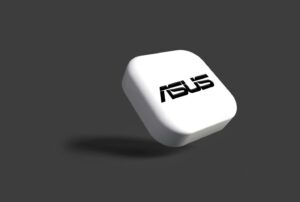The goal for a truly automated enterprise is a general-purpose AI that can be deployed across its entire robotic fleet, much like a single operating system can run on different computers.
A wheeled robot navigating a warehouse floor, a quadruped patrolling a campus perimeter, and a drone inspecting inventory operate on entirely different software stacks. Each new piece of hardware demands its own specialised algorithms for navigation, perception, and task execution. This balkanised approach leads to high development overhead, complex integration, and inefficient model training, ballooning the total cost of ownership and hampering scalability.
Galbot, in collaboration with university research teams, has announced a system called NavFoM (Navigation Foundation Model) that it claims addresses the fragmentation issue. The company describes it as the “world’s first cross-embodiment, cross-task navigation” foundation AI model that could be used for an enterprise’s full robotic fleet.
The system’s design moves away from learning single navigation tasks and instead aims to teach a single AI model the general concept of how to move. In practice, this means the same core model can be deployed on “quadrupeds to wheeled humanoids, legged humanoids, drones, and even vehicles”. This model can interpret natural language commands to perform a range of activities, from “Follow that person” on a factory floor to “Find the red car at the door” in a car park.
[embedded content]
The core business value lies in deployment efficiency. The model is designed to operate in “previously unseen scenes without the need for pre-mapping or additional training data”. For operations managers, this zero-shot capability could eliminate the costly and time-consuming process of laser-scanning a facility or creating a detailed digital twin before a robot can be deployed. However, the true test of this value will be in pilot programmes. Operations leaders should validate this claim in a dynamic environment, such as a busy receiving dock, rather than a static hallway.
The unified approach also allows for AI cross-learning, where behaviours learned by one robot type can inform another in the broader robotic fleet. Galbot suggests “road prediction” knowledge from an autonomous driving system could inform path planning for a wheeled robot in a busy warehouse aisle.
Adopting a foundational model for navigation is not a simple hardware swap. Enterprise IT and operations leaders must consider the underlying technical demands.
The system’s intelligence is built on a massive dataset, reportedly packing eight million navigation data points and four million question-answering samples. For chief data officers, this highlights that competitive advantage in physical operations will increasingly come from data. While Galbot provides the foundation, a company’s ability to fine-tune it with its own proprietary visual and spatial data will determine its ultimate performance and create a competitive moat.
The computational load is also a key factor. NavFoM is a seven billion parameter model. While Galbot claims its “BATS Strategy” (Budget-Aware Token Sampling) allows for real-time responses by mimicking human attention, this still necessitates potent compute hardware on the robot itself.
To improve training performance, the company developed a “visual feature caching” mechanism. This approach reportedly speeds up training 2.9-fold and reduces average GPU memory cost by 1.8-fold, making large-scale training more feasible.
This technology changes the procurement conversation for enterprise leaders. For CIOs and CTOs, rather than procuring a “security robot” as a black-box appliance, the focus should be on the underlying AI model that could power the entire robotic fleet.
When vetting potential vendors, the key question is whether their platform is a single-use solution or a general-purpose foundation that can scale across different hardware. The long-term total cost of ownership for a unified model should, in theory, be lower than managing a dozen various systems.
Galbot is already building out this platform concept with specialised applications like TrackVLA++ for long-range following and UrbanVLA, which integrates with third-party mapping software for route planning. This approach suggests a move away from viewing robots as “localised functions” and treating them as part of an “intelligent infrastructure”.
Leaders who prepare their data strategies and procurement policies for this change will be better positioned to scale their AI and robotic fleet efforts effectively.
See also: Zscaler: Securing enterprise IoT, OT, and mobile systems


Want to learn more about IoT from industry leaders? Check out IoT Tech Expo taking place in Amsterdam, California, and London. The comprehensive event is part of TechEx and is co-located with other leading technology events including the Cyber Security Expo. Click here for more information.
IoT News is powered by TechForge Media. Explore other upcoming enterprise technology events and webinars here.


